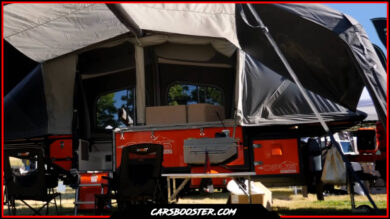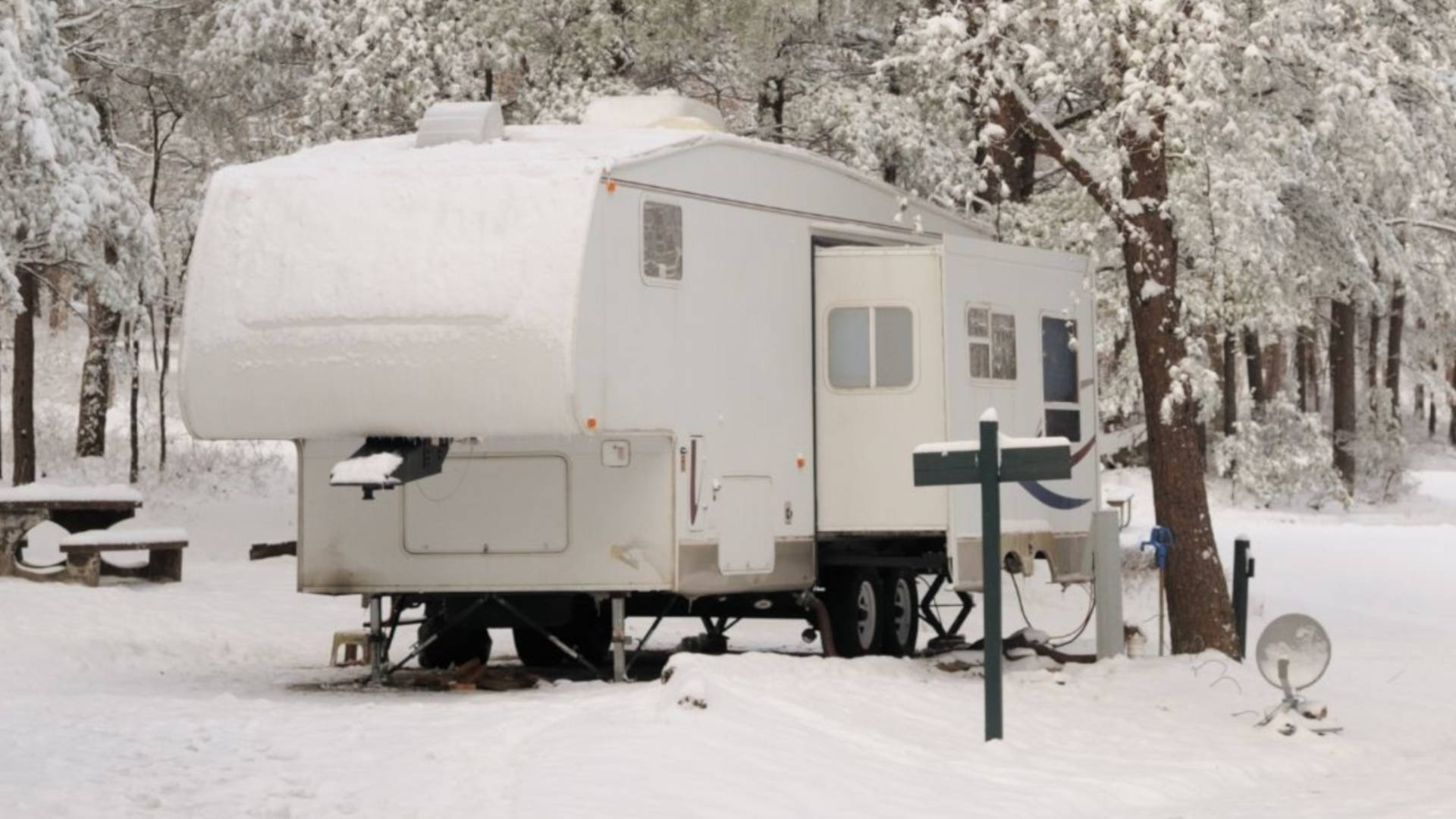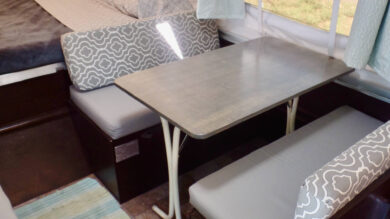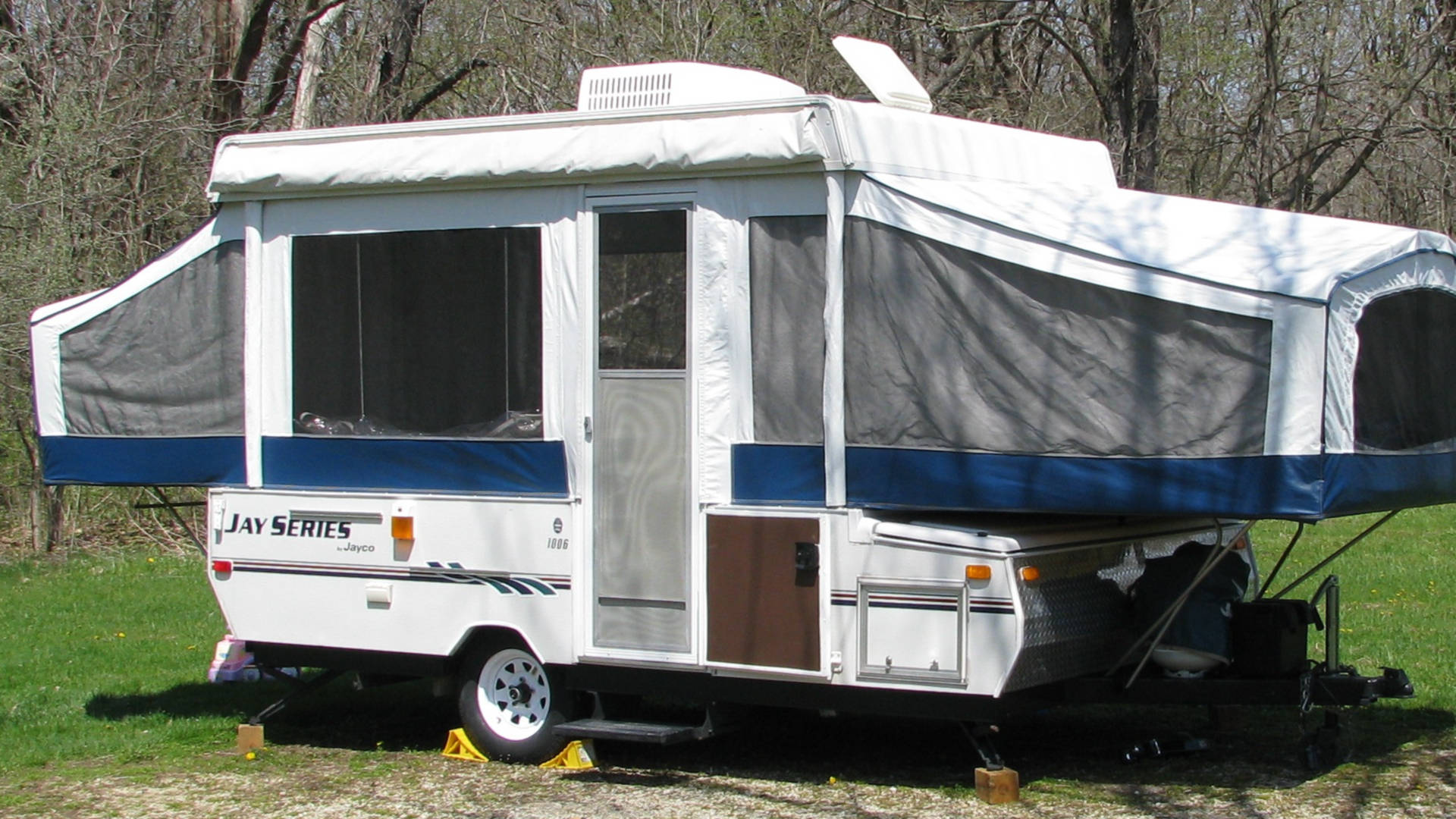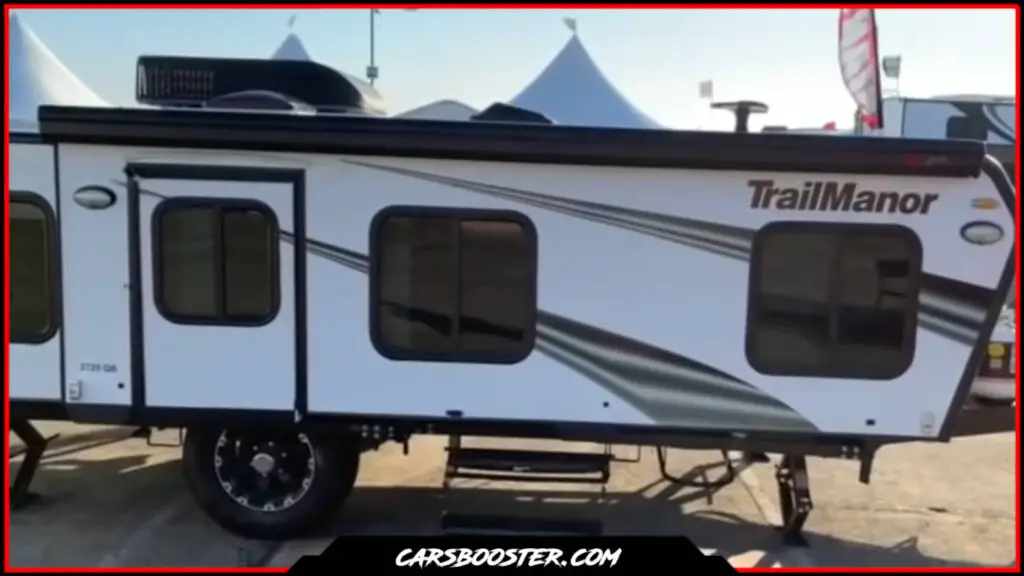
Planning a camping trip but the weather is kinda cloudy? you better double-check on your pop up camper waterproofing before hitting the road as water damage to your camper might ruin all the fun for you.
This article discusses the issue of water leaking in pop up campers and how to fix it.
Briefly: Brand new pop up campers are waterproof from the factory, but as time passes they tend to lose that criterion. Hence a waterproofing procedure has to be made to ensure the expectancy of your pop-up camper.
Can Water Damage My Pop Up Camper?
Water damage is one of the most common causes of RV and trailer failure. If a little leak that appears to be controllable is not addressed fast enough, it might cause many problems.
Once water damage has reached your camper’s walls, flooring, or roof, it never fully recovers. Wooden components decay or distort. Metals corrode and rust. Mold and mildew start to grow, posing a health risk if you decide to stay in your pop up camper.
What’s even worse, the vehicle’s foundation becomes unstable. As the structure of your camper deteriorates, you may notice weak places. It would just take a little more stress on those weak points to completely fail.
There’s not much you can do if your pop up camper has met this tragedy. It would cost double the price of your camper to repair the walls, flooring, and ceiling.
It’s also very hard to regain a part of your money by selling it. Nobody would buy a pop up camper knowing it has water damage. It’s not consumer-friendly at all.
Is My Pop Up Camper Waterproof?
New models of pop up campers are waterproof, although they may lose some of their waterproofing with time. A used pop-up camper on the other hand may not be as good as when it was new. So, periodically, you might need to waterproof certain items.
The canvas in newer models is not pure canvas, but rather a blend of cotton and vinyl. The pop up camper is waterproof thanks to the vinyl material.
Doing some camping in wet weather conditions? Here’s something to keep in mind, Vinyl scatters water effectively and hence provides better camping circumstances when it rains. Canvas cloth, on the other hand, maybe waterproofed to keep the water out.
Condensation can occur with vinyl materials, but less so with cotton canvas. As a result, combining both works wonders.
How To Protect And Waterproof My Pop Up Camper?
The best thing you can do is to protect your camper as much as possible, and increase your pop up camper waterproofing capabilities, to prevent any future water damage. Thus we will be mentioning the top 5 tips for protecting and waterproofing pop-up campers.
Cover And Store Your Pop Up Camper In Offseasons
All of your efforts to keep your pop-up camper dry might be rapidly undone during the winter.
The location of your pop up camper storage is critical. Outdoor storage facilities may be less expensive than indoor storage facilities, but you may not be saving as much as you anticipated.
Your camper would be exposed to rain, snow, and wind damage for months. You can return and discover that your vehicle requires costly repairs. It would have been wiser to pay for indoor storage.
You may have to keep your camper outside throughout the winter for financial or space issues. If this is the case, you should never leave your pop up camper without a cover! If you do, you’re basically inviting the cold weather to destroy it. Even if you keep your camper indoors, a cover is always a good idea.
Regarding the type of cover, you must ensure that it is waterproof. The cover’s waterproof structure assures that it will protect your camper from damage in any scenario.
Although a fiberglass roof should always be waterproof, minor fractures caused by freezing water can lead to larger holes and fractures that can harm the top’s surface.
Furthermore, putting your pop-up camper outside in the elements would put the canvas and vinyl at risk of damage because these materials are easily torn or shredded and mice, squirrels, and rats won’t think twice about chewing through them.
Hence, not storing and covering it, would lead to compromising your pop up camper waterproofing abilities.
Use Waterproof Spray on The Canvas And Apply Seam Tape As Well
Waterproof spray or coating must be applied to canvas tent sides. At the very least once per season, this should be done to ensure your pop-up camper stays dry.
Just make sure you completely clean your canvas before treating it, since any dirt could impair the waterproof spray’s effectiveness.
As you did apply the waterproof spray, you might as well use seam tape on the canvas or vinyl. seam tape needs to be applied each season too as it tends to peel over time.
Have Anti-Mold and Anti-Mildew Products Ready To Go
Mold and mildew are not desirable anywhere, yet they do occur. While you should always attempt to figure out why you have these unwelcome germs in your pop up camper, you should also get rid of them as soon as possible.
Mold and mildew, according to the Centers for Disease Control, can cause a number of health problems. To be fair, these will not affect everyone. It all depends on how sensitive you are to mold. If you are sensitive to mold and mildew, you may have skin and eye irritation, wheezing and coughing, a sore throat, and congestion.
To address your mold and mildew problem as soon as you see it, you require a spray to eradicate those harmful germs.
Use Caulk Around Your Air Conditioning Units And Vent Fans, Also Clean Them Regularly
Leaks are common in the area surrounding your air conditioner and vent fans. This is typically due to the caulk around this area drying up over time. To avoid this issue, remove and reapply the caulk every season to maintain your pop up camper waterproofing.
Use only outside caulk. Silicone caulks are excellent since they can endure temperature variations and take a long time to dry. These caulks are simple to apply and require only a simple caulk tool.
Caulk does not have to be limited to the roof alone. You may and should re-caulk the camper’s side panels. Because these regions are frequently joined at the corners.
You may be wondering what clogged-up vents have to do with waterproofing. The solution is rather extensive! While a clogged vent would never cause water leaks, it is still not something to take lightly.
Your vents should be cleaned on a regular basis. You must remove any dust, debris, grime, and other impediments. The vents in your pop up camper play a crucial role. It is their responsibility to filter out the heated air generated by cooking, showering, and washing their hands.
They keep humidity out of your camper, preventing condensation on the windows and other glass surfaces. Mold and mildew are also less likely to grow in your camper.
When your vents become clogged, they are unable to perform their function. That makes you vulnerable to mold and mildew, but also to other types of damage.
Metal, for example, is more likely to rust when exposed to high humidity or moisture. This endangers the structural integrity of your camper, risking you and all people on board. So make sure to clean those vents often.
Never Roll up Your Canvas When It’s Wet, Damp, Or Almost Frozen
In frigid weather, a canvas or vinyl pop up camper will become stiff. Interior condensation can actually freeze on the fabric itself, turning the entire wall into a sheet of ice.
Closing the camper or rolling up the canvas while it is in this state may result in tears. Hence ruining your pop up camper waterproofing.
Before closing up your pop-up camper, use your heater to defrost the walls. When you go home and inside your garage, open the camper again to allow it to dry out before closing it again. This will help in the prevention of mold and mildew growth within your pop-up camper.
Conclusion
There are several things you can do to help your pop up camper waterproofing. These things don’t take long, but they may significantly enhance the longevity of your pop-up camper waterproofing.
We always recommend reading the owner’s manual for information on how to care for and protect your camper’s canvas and other materials. There may be some unique advice regarding the material of your individual camper.
If you are going camping on chilly days with your pop up camper, you might like to check our article The 5 Best Ways To Heat Up A Pop Up Camper.
Thinking of adding some useful attachments to your pop-up camper, like a Roof Rack for example, or even a Bike Rack? make sure to check our articles as they might offer some help.
In case you are looking for a pop up camper, we might be able to help if you check our 3 Best Pop Up Camper Brands To Buy, or you should consider renting a pop-up camper first if you are still new to the camping world, don’t worry we got you covered as well, check our Pop up camper renting guide.
Finally, We hope that our small article is simple, useful, and enjoyable. If so feel free to support us by sharing as it motivates us to produce more content.
